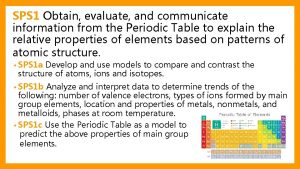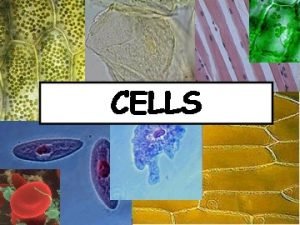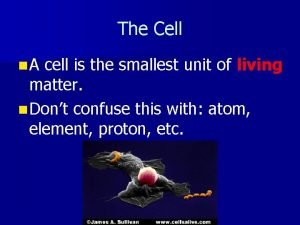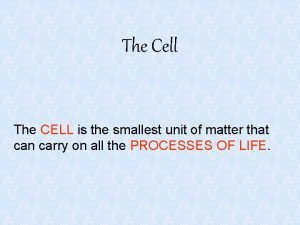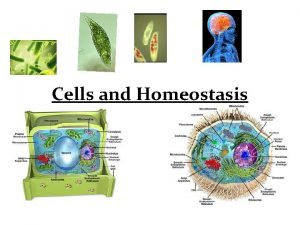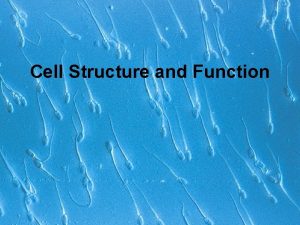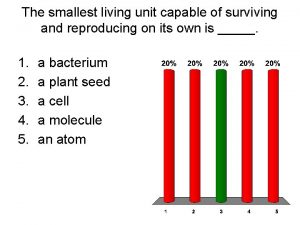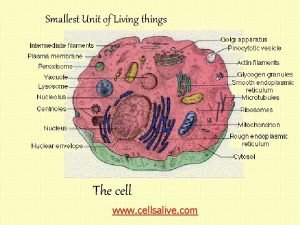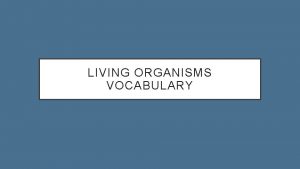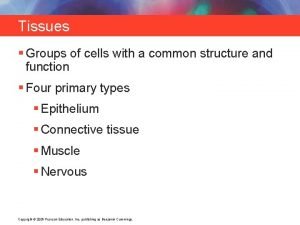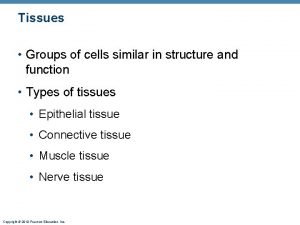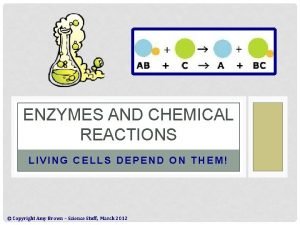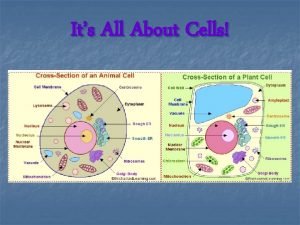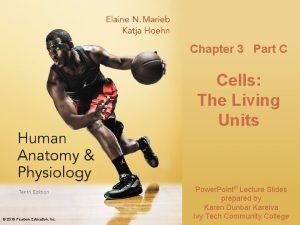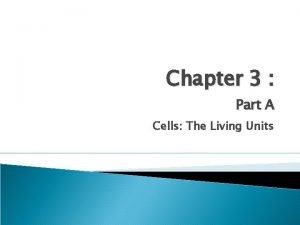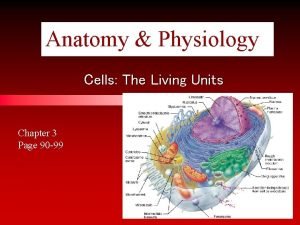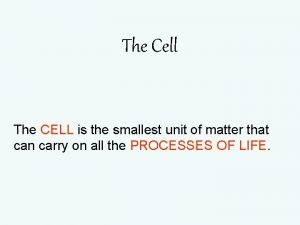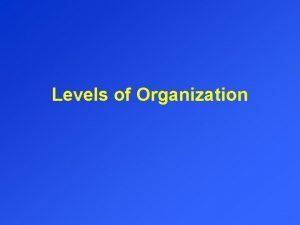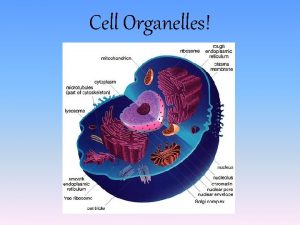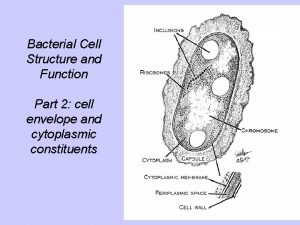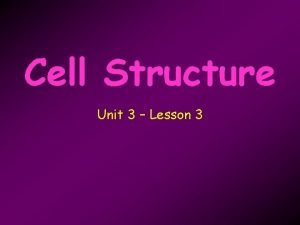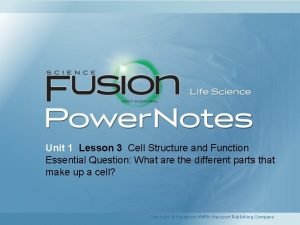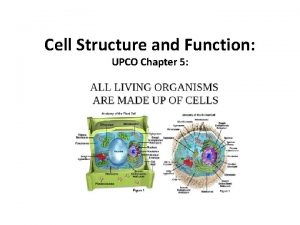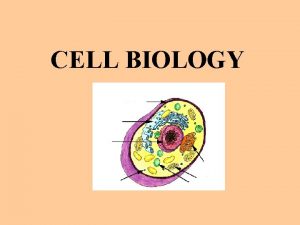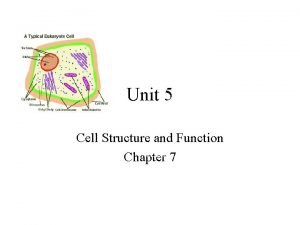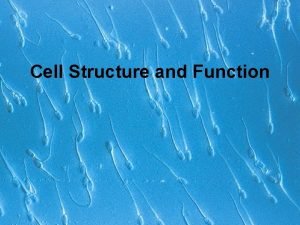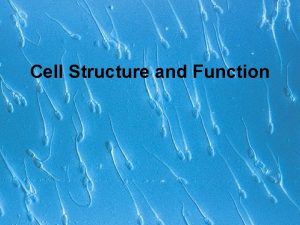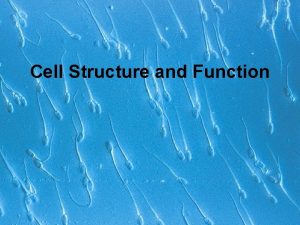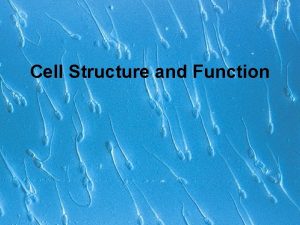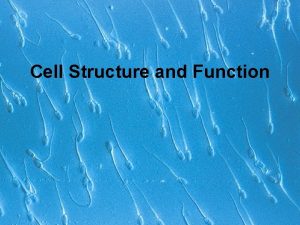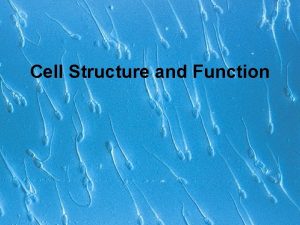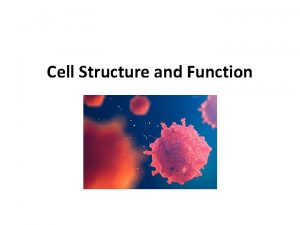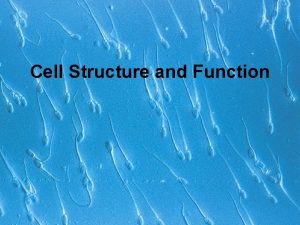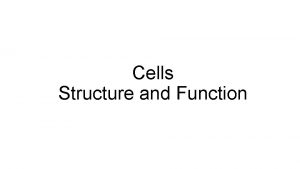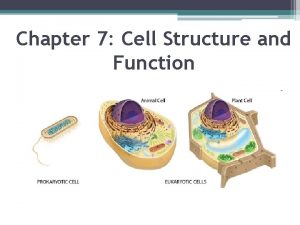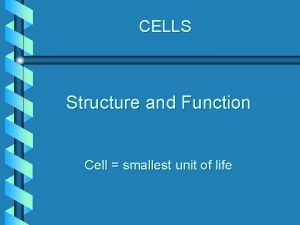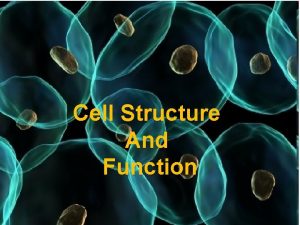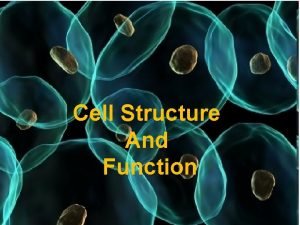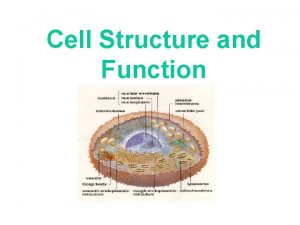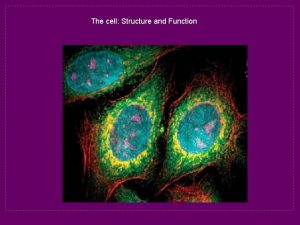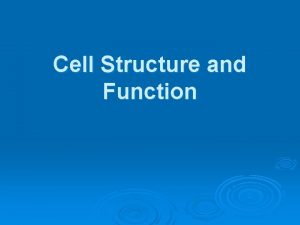Cell Structure Function EOCT Review Cells Smallest living























































- Slides: 55

Cell Structure & Function EOCT Review

Cells • Smallest living unit that is capable of performing life functions. • Most are microscopic • Discovery: – Robert Hooke (mid 1600 s) • Observed sliver of cork • Coined the term cell

Cell Theory • All living things are made up of cells. • Cells are the smallest working units of all living things. • All cells come from preexisting cells through cell division.

Examples of Cells Amoeba Proteus Plant Stem Bacteria Red Blood Cell Nerve Cell

Two Types of Cells Eukaryotic Prokaryotic

Prokaryotic • Do not have structures surrounded by membranes • Few internal structures • One-celled organisms, Bacteria http: //library. thinkquest. org/C 004535/prokaryotic_cells. html

Eukaryotic • Contains Nucleus • Contain organelles surrounded by membranes • Most living organisms Animal Plant

“Typical” Animal Cell

“Typical” Plant Cell http: //waynesword. palomar. edu/images/plant 3. gif

Plasma Membrane • Contains cell contents • Double layer of phospholipids & proteins Movement Across the Plasma Membrane • A few molecules move freely – Water, Carbon dioxide, Ammonia, Oxygen • Carrier proteins transport some molecules Phospholipids • Polar – Hydrophylic head – Hydrophobic tail

Cell Membrane


Cell Wall • Most commonly found in plant cells & bacteria • Supports & protects cells http: //library. thinkquest. org/12413/structures. html

Nucleus • Directs cell processes • Separated from cytoplasm by nuclear membrane • Contains genetic material - DNA

Chromosomes • In nucleus • Made of DNA • Contain instructions for traits & characteristics

Nucleolus • Inside nucleus • Contains RNA to build proteins

Cytoplasm • Gel-like mixture • Surrounded by cell membrane

Endoplasmic Reticulum • Moves materials around in cell • Smooth type: lacks ribosomes • Rough type (pictured): ribosomes embedded in surface

Ribosomes • Each cell contains thousands • Make proteins • Found on ribosomes & floating throughout the cell http: //library. thinkquest. org/12413/structures. html

Mitochondria • Produces energy through chemical reactions – breaking down fats & carbohydrates • Controls level of water and other materials in cell • Recycles and decomposes proteins, fats, and carbohydrates

Golgi Bodies • Protein 'packaging plant' • Move materials within the cell • Move materials out of the cell http: //library. thinkquest. org/12413/structures. html

Lysosome • Digestive 'plant' for proteins, fats, and carbohydrates • Transports undigested material to cell membrane for removal • Cell breaks down if lysosome explodes

Vacuoles • Membrane-bound sacs for storage, digestion, and waste removal

Chloroplast • Usually found in plant cells • Contains green chlorophyll • Where photosynthesis takes place

Passive Transport • No energy required • Move due to gradient – differences in concentration, pressure, charge • Move to equalize gradient – High moves toward low

Types of Passive Transport 1. Diffusion 2. Osmosis 3. Facilitated diffusion

Diffusion • Molecules move to equalize concentration

Osmosis • Diffusion of water • Fluid flows from lower solute concentration • Often involves movement of water – Into cell – Out of cell

Solution Differences & Cells • solvent + solute = solution • Hypotonic – Solutes in cell more than outside – Outside solvent will flow into cell • Isotonic – Solutes equal inside & out of cell • Hypertonic – Solutes greater outside cell – Fluid will flow out of cell


Facilitated Diffusion • Differentially permeable membrane • Channels (are specific) help molecule or ions enter or leave the cell • Channels usually are transport proteins (aquaporins facilitate the movement of water) • No energy is used

Process of Facilitated Transport • Protein binds with molecule • Shape of protein changes • Molecule moves across membrane

Active Transport • Requires energy (against gradient) • Example is sodium-potassium pump

Endocytosis • Movement of large material – Particles – Organisms – Large molecules • Movement is into cells • Types of endocytosis – bulk-phase (nonspecific) – receptor-mediated (specific)

Process of Endocytosis • Plasma membrane surrounds material • Edges of membrane meet • Membranes fuse to form vesicle

Forms of Endocytosis • Phagocytosis – cell eating • Pinocytosis – cell drinking

Exocytosis • Vesicle moves to cell surface • Membrane of vesicle fuses • Materials expelled

1. Unlike prokaryotic cells, eukaryotic cells have the capacity to a. assemble into multicellular organisms. b. establish symbiotic relationships with other organisms. c. obtain energy from the Sun. d. store genetic information in the form of DNA.

2. Inside eukaryotic cells are membrane-bound structures called_______. a. cell walls. b. cilia c. organelles. d. cytoplasm.

3. The assembly of proteins in the cell takes place in the _______. a. nucleus b. vacuoles c. cytoplasm d. mitochondria

4. Which of the following is an organism whose cell(s) lack(s) membrane-bound organelles? a. nucleolus b. chromatin c. eukaryote d. prokaryotes

5. Which means of particle transport requires input of energy from the cell? A. diffusion B. Osmosis C. Facilitated Diffusion D. Active Transport

6. The complexity of body systems differs greatly among organisms. Which of the following organisms has developed organ systems for obtaining and utilizing energy? a. bacterium b. mushroom c. mouse d. virus

7. Enzymes for intracellular digestion are stored in the a. lysosomes. b. vacuoles. c. nucleoli. d. mitochondria.

8. Besides the nucleus, DNA is found in which of the following cell organelles? a. chloroplasts b. mitochondria c. mitochondria and chloroplasts d. mitochondria and ribosomes

9. The movement of molecules into cells is most dependent on the a. selectivity of the cell membrane. b. selectivity of the cell wall. c. number of the vacuoles. d. number of mitochondria.

10. An organelle that is present in the cells of a mouse but not present in the cells of a bean plant is a a. cell wall. b. chloroplast. c. cell membrane. d. centriole.

11. A student could tell the difference between onion skin cells and cheek cells because the onion skin cells have a a. cell membrane. b. nucleus. c. centriole. d. cell wall.

12. The cell theory states that: A. All living things are made of cells. B. All cells come from other living cells of a different kind. C. Cells are the basic unit of some living things. D. all of the above

13. The mitochondria of a cell A. has only one membrane. B. has no membrane. C. produces ATP. D. is where cell respiration occurs. E. both C and D

14. Which of the following organisms are prokaryotes? A. protozoa B. bacteria C. fungi D. amoeba

15. A nonliving cell structure is a A. Nucleus B. Cell wall C. Golgi body D. Cell membrane

16. An animal cell that is surrounded by fresh water will burst because the osmotic pressue causes A. water to move into the cell B. water to move out of the cell C. solutes to move into the cell D. solutes to move out the cell

17. Which list represents the levels of organization in a multicellular organism from the simplest level of the most complex level? A. cell, tissue, organ system B. organ system, organ, tissue, cell C. tissue, organ system D. cell, tissue, organ system

18. Prokaryotes lack A. Cytoplasm B. A cell membrane C. A nucleus D. Genetic Material
 Eoct review by standard sps1 answer key
Eoct review by standard sps1 answer key What is the smallest living unit
What is the smallest living unit Chapter 7 cell structure and function section review 7-2
Chapter 7 cell structure and function section review 7-2 The smallest unit of life is the
The smallest unit of life is the Cells are the smallest unit of life
Cells are the smallest unit of life The cell is the smallest
The cell is the smallest A cell is the smallest unit of
A cell is the smallest unit of What is the smallest living unit in the body
What is the smallest living unit in the body Smallest living unit
Smallest living unit What is the smallest living unit in the body
What is the smallest living unit in the body What is the smallest living unit
What is the smallest living unit The smallest living unit
The smallest living unit Smallest unit of life
Smallest unit of life What is the smallest unit of living organisms
What is the smallest unit of living organisms Groups of cells with a common structure and function.
Groups of cells with a common structure and function. Dense regular connective
Dense regular connective Tissues are groups of similar cells working together to:
Tissues are groups of similar cells working together to: Cell wall function
Cell wall function Submentovertical projection
Submentovertical projection Regulation of tubular reabsorption
Regulation of tubular reabsorption Thyroid parafollicular cells
Thyroid parafollicular cells Gamete vs somatic cell
Gamete vs somatic cell Somatic cells vs germ cells
Somatic cells vs germ cells Chlorocruorin
Chlorocruorin Prokaryotic vs eukaryotic cells
Prokaryotic vs eukaryotic cells Plant and animal cell venn diagram
Plant and animal cell venn diagram Prokaryotes vs eukaryotes venn diagram
Prokaryotes vs eukaryotes venn diagram The organelle trail
The organelle trail Masses of cells form and steal nutrients from healthy cells
Masses of cells form and steal nutrients from healthy cells Label
Label What cell type
What cell type Prokaryotic cell wall
Prokaryotic cell wall Nondisjunction in meiosis
Nondisjunction in meiosis Cells cells they're made of organelles meme
Cells cells they're made of organelles meme Difference between enzyme and protein
Difference between enzyme and protein Tissue are grouped together to form various
Tissue are grouped together to form various Are chromosomes living or nonliving
Are chromosomes living or nonliving Rough er
Rough er Chapter 3 cells the living units
Chapter 3 cells the living units Mitosis
Mitosis Smallest cell organelle
Smallest cell organelle Smallest part of a cell
Smallest part of a cell Smallest organelle
Smallest organelle Difference between living and non living organisms
Difference between living and non living organisms Is a moss living or nonliving
Is a moss living or nonliving Living non living dead
Living non living dead Bacterial cell structure and function
Bacterial cell structure and function Lesson 3 cell structure and function answer key
Lesson 3 cell structure and function answer key Cells graphic organizer
Cells graphic organizer Plant cell structure and function
Plant cell structure and function Cell
Cell Eukaryotic cell structure
Eukaryotic cell structure Cell graphic organizer
Cell graphic organizer Chapter 5 cell structure and function
Chapter 5 cell structure and function Plastids in plant cell
Plastids in plant cell Unit 5 cell structure and function answer key
Unit 5 cell structure and function answer key
